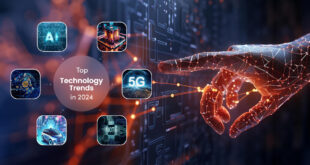Artificial Intelligence (AI) is more than just a buzzword; it’s reshaping our world in remarkable ways. From the smartphones we carry to the smart homes we live in, AI technology has become an integral part of our daily lives. But what exactly is AI? And how does it work? Understanding its various types can provide insight into this fascinating field and its vast potential. Dive with us as we explore the four main types of AI technology and discover real-life applications that highlight their impact today!
Types of AI:
AI technology can be categorized into four distinct types, each with unique characteristics and capabilities.
Reactive machines are the simplest form. They respond to specific inputs without any memory or past experiences influencing their actions. A prime example is IBM’s Deep Blue, which famously defeated chess champion Garry Kasparov.
Limited memory AI has a bit more complexity. It uses historical data to inform its decisions, allowing for improved performance over time. Self-driving cars utilize this type of AI by learning from vast amounts of driving data to navigate safely.
Theory of mind AI is still in development but aims to understand human emotions and social interactions effectively. This could revolutionize how machines interact with people on a deeper level.
Self-awareness AI represents the most advanced concept—machines that possess consciousness and an understanding of their existence. While purely theoretical for now, it sparks intriguing discussions about the future of technology and intelligence.
A. Reactive Machines
Reactive machines are the most basic type of artificial intelligence. They operate solely on the present, without any memory or ability to learn from past experiences. This makes them quite limited in their capabilities.
One well-known example is IBM’s Deep Blue, which famously defeated chess champion Garry Kasparov in 1997. Deep Blue analyzed millions of possible moves and outcomes but had no understanding beyond that moment in time.
These systems rely on a set of pre-programmed rules and algorithms to make decisions instantly. Because they can’t adapt or evolve based on previous data, reactive machines are best suited for straightforward tasks where quick responses matter.
In many ways, they’re like sophisticated calculators—highly efficient within their narrow scope but unable to venture into more complex reasoning or emotional understanding. Their simplicity allows for speed and precision in specific applications.
B. Limited Memory
Limited Memory AI represents a significant leap forward in artificial intelligence capabilities. Unlike reactive machines, these systems can learn from historical data to improve their decision-making processes.
Think of self-driving cars. They use limited memory AI to analyze vast amounts of data collected from past trips. This enables them to make real-time decisions based on previous experiences and current road conditions.
Limited memory allows these technologies to adapt over time, refining their algorithms as they encounter new scenarios. It’s not just about reacting; it’s about learning how to navigate complex environments more efficiently.
As this technology evolves, its applications extend beyond transportation into sectors like healthcare and finance, where predictive models can enhance patient care or identify market trends. The ability for machines to hold onto relevant information while discarding the obsolete is paving the way for smarter solutions across various industries.
C. Theory of Mind
Theory of Mind represents a significant leap in AI capabilities. This type of artificial intelligence goes beyond mere programming to understand human emotions and intentions.
Imagine an AI that can recognize feelings, empathize, and even predict responses based on social contexts. It’s a game-changer for industries like education and mental health care.
For example, consider chatbots designed to offer emotional support. They can gauge user sentiment through text analysis and respond more appropriately than traditional bots. This creates a more engaging experience for users seeking help or companionship.
While still largely theoretical, advancements continue to bring us closer to this reality. As researchers explore the nuances of human interaction, the potential applications seem limitless—from personalized learning experiences to advanced therapeutic tools that adapt in real-time.
D. Self-Awareness
Self-awareness in AI is a fascinating concept. It refers to machines that can understand and contextualize their existence and actions within an environment. Imagine an AI that not only processes data but also reflects on its experiences.
This level of intelligence remains largely theoretical at present. While we see advancements in various types of AI, self-aware systems are still a vision for the future. The implications could be profound—AI could make decisions based on emotions or ethical considerations rather than just logic.
The idea raises intriguing questions about autonomy and responsibility. Would a self-aware AI have rights? How would it interact with humans? As researchers explore this frontier, they navigate uncharted territory filled with potential benefits and ethical dilemmas alike.
How AI is used in everyday life:
AI has woven itself into the fabric of our daily routines. One of the most visible examples is virtual assistants. Siri, Alexa, and Google Assistant help us manage tasks effortlessly. They set reminders, play music, and answer questions at a moment’s notice.
Then there’s image and voice recognition technology. Think about facial recognition software unlocking your smartphone or speech-to-text programs transcribing your words in real time. These tools enhance security and streamline communication.
Predictive analytics also plays a crucial role in our lives today. Banks use it to detect fraudulent activities before they spiral out of control. Retailers rely on it to forecast inventory needs based on shopping trends.
From navigation apps suggesting optimal routes to personalized content recommendations on streaming services, AI influences many aspects of how we live seamlessly every day.
A. Virtual Assistants
Virtual assistants have revolutionized how we interact with technology. These AI-driven tools are designed to make our lives easier by performing tasks on command.
Siri, Alexa, and Google Assistant are among the most popular names in this space. They can set reminders, answer questions, and even control smart home devices. Just say a few words, and they spring into action.
What sets them apart is their ability to learn from user interactions. Over time, they become more attuned to individual preferences. This personalization enhances user experience significantly.
These virtual companions also integrate seamlessly with various applications. Whether it’s booking a ride or playing your favorite song, convenience is just a voice command away.
Their growing presence in daily life indicates that we’re only scratching the surface of what’s possible with AI technology like this.
– Example: Siri, Alexa, Google Assistant
Virtual assistants have transformed how we interact with technology. Siri, Alexa, and Google Assistant are at the forefront of this revolution.
These intelligent helpers respond to voice commands, making everyday tasks easier. Whether you need a quick weather update or want to control smart home devices, they’re just a question away.
Siri is deeply integrated into Apple’s ecosystem. It allows users to send messages, make calls, and even set reminders effortlessly.
Alexa has carved out its niche in the world of smart speakers and home automation. With thousands of skills available, it can play music or provide cooking tips seamlessly.
Google Assistant excels in providing information on demand. Its search capabilities allow for an unparalleled level of knowledge at your fingertips.
Together, these virtual assistants showcase AI’s potential to enhance daily life by adding convenience and efficiency.
B. Image and Voice Recognition
Image and voice recognition technologies are revolutionizing how we interact with devices. These systems can analyze visual inputs to identify objects, scenes, and even people.
Facial recognition software is a prime example. It’s used in security settings and social media platforms to tag friends automatically. This technology learns patterns from thousands of images, enhancing accuracy over time.
Voice recognition has also gained traction. Speech-to-text programs enable hands-free operation for users everywhere. From transcribing meetings to controlling smart home devices, the applications are endless.
These innovations not only improve convenience but also add layers of security and personalization. As they evolve, they become more integrated into our daily routines, making life smoother and more efficient without us even realizing it.
– Example: Facial recognition software, speech-to-text programs
Facial recognition software has transformed security and user engagement. It’s used in smartphones to unlock screens, ensuring only authorized users gain access. Beyond personal devices, businesses utilize this technology for surveillance and identifying individuals in crowded spaces.
On the other hand, speech-to-text programs revolutionize how we interact with our devices. These programs convert spoken language into written text seamlessly. This feature helps those with disabilities communicate more effectively while also streamlining transcription tasks across various industries.
Both technologies exemplify AI’s capability to enhance everyday experiences. They make processes simpler and more efficient, allowing us to focus on what truly matters—connecting with others or enhancing productivity without additional hurdles.
C. Predictive Analytics
Predictive analytics is a fascinating aspect of artificial intelligence, leveraging vast amounts of data to forecast future events. This technology analyzes historical information and identifies patterns that help businesses make informed decisions.
In the financial sector, for example, predictive analytics plays a vital role in detecting fraudulent activities. By assessing transaction behaviors and flagging anomalies, AI can alert institutions before significant losses occur.
Retailers also benefit from this technology by predicting consumer behavior. Understanding shopping trends allows them to optimize inventory levels and create personalized marketing strategies tailored to individual preferences.
Healthcare has seen innovations too. Predictive models analyze patient data to anticipate health issues before they escalate, enabling proactive care management.
As industries harness the power of predictive analytics, they are reshaping how we approach problems and strategies in our daily lives. The future looks promising with these intelligent insights driving change across various sectors.






